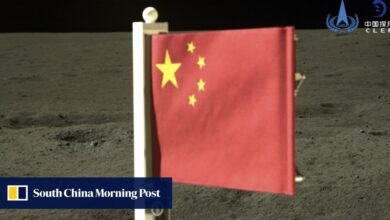End the era of two cultures between science and humanities

The melody of human progress to date has been played on two great instruments: science and the humanities. But for the past few hundred years, these instruments have been treated as separate entities, one concerned with the physical world and validated by objective empirical tests, the other largely with subjective individuality and human meaning.
To use the famous words of chemist and author CP Snow in his 1959 Rede lecture at Cambridge University, we are in an age of two cultures: science and the humanities can now barely hear each other across the gulf we have created between them.
Make no mistake. The stakes are high. Living our lives as if the humanities and the sciences were distinct will negatively affect our continued development, especially given the reliance on siloed departments and divisions in what counts as “higher education” in the modern American university. Astronomers never cross paths with anthropologists, lawyers with physicians, mathematicians with classicists. No one, then, emerges from the university with an understanding of how these fields should engage. Instead, we act as if complicated problems can be solved through a purely technical and scientific mindset, divorced from engagement with basic questions about ethical implications, politics, and human impact. We teach people to be this way.
These few centuries were a flash in the pan: no ancient culture separated science from the humanities. What humans knew was considered a holistic body of knowledge to help them live better lives, and the physical world and humanistic self-reflection could and did work together. Figures like Aristotle, Averroes, and Francis Bacon had expertise that spanned the entire body of knowledge. J. Robert Oppenheimer framed his core work in terms of the Bhagavad Gita, understanding the implications of becoming a “destroyer of worlds”; in science fiction, Isaac Asimov’s “Three Laws of Robotics” shaped concerns about artificial intelligence long before AI in its current form existed; Dr. Edward Jenner’s work on the smallpox vaccine was built on popular practices like variolation. They listened to the conversation that science was having with the humanities and culture.
This is not an argument for biologist E. O. Wilson’s concept of consilience, which posited that the humanities and social sciences can be explained by the same underlying laws that govern the physical world. It is an argument that the humanities and sciences are mutually interactive and help to build each other up. The humanities are not dead: what we need to do is see how they can play with the sciences. Until we see this, our advances in science and technology will proceed blindfolded.
Why did it take us a century to realize that medicine based on the white male body wouldn’t work for everyone? The Roman physician Galen knew this two millennia ago. Well, it’s because of the S-word: silo.
The enormous challenges of the 21st century require a multidimensional approach that brings together multiple perspectives on what matters to us. Given what we are facing now—global warming, nuclear war, the AI issue—our future should not be left to technocrats alone. We need scientists and engineers who understand the unquantifiable costs of their technical advances, and humanistic thinkers who can critically analyze the data and narratives that shape our world.
Where to start? In higher education, where the walls that separate departments and divisions must be weakened. Building bridges requires a paradigm shift in education, one that allows students to be versed in what connects disciplines as well as what separates them, one in which a medical student and a philosopher might well be in the same class.
Yes, fostering interdivisional exposure, in which students engage with both scientific and humanistic perspectives while maintaining their core practices, is difficult. But it is more critical than ever.
Shadi Bartsch-Zimmer was director of The Institute on the Foundation of Knowledge from 2015 to 2024 in tUniversity of Chicago.
Submit a letter, no longer than 400 words, to the editor here or email letters@chicagotribune.com.




